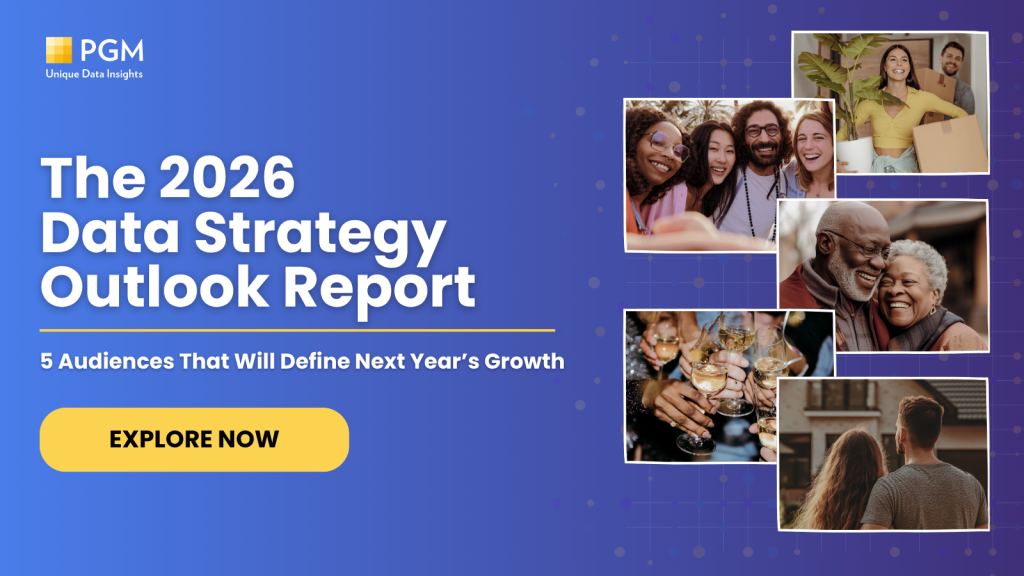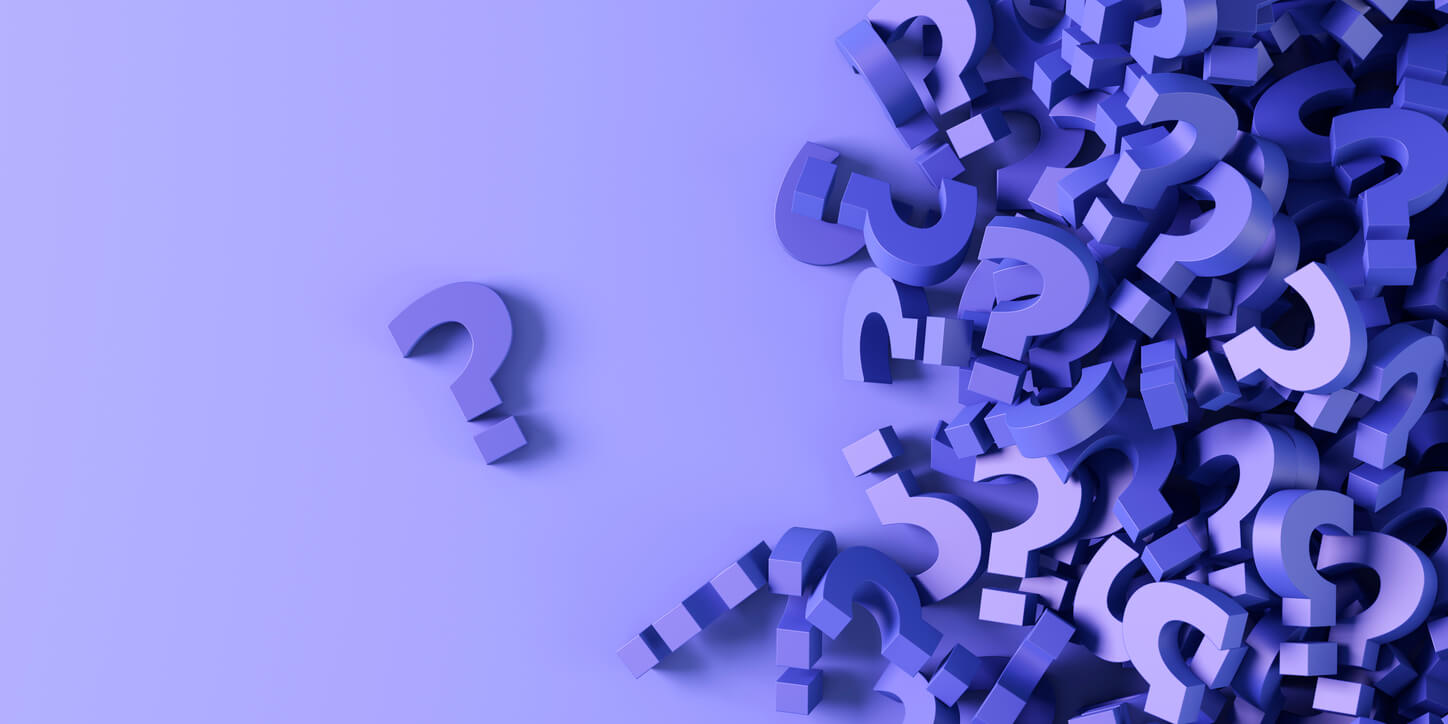2026 isn’t going to be about chasing more–more ads, more channels, more data. Consumers are already overwhelmed and tuning it out. The brands that will get attention will be the ones that simplify, focus, and show up in ways that feel highly personal and relevant.
But simplifying alone isn’t enough. The bigger shift in 2026 is how consumers are reacting to the rise of AI: 55% report fatigue from AI-driven messaging, and 53% say AI-driven personalization in retail has had no positive impact on their experience.
Consumers don’t want “AI-flavored personalization.” They want marketing that understands what they want and delivers the solutions they’re looking for.
As a result, intent signals are rising to the forefront and becoming the most reliable predictor of where dollars will flow next year.
5 Types of Intent Signals to Guide Your 2026 Targeting Strategy
Intent signals offer behavioral and life-stage clues that reveal when a consumer is ready to act. Here are five types of intent signals to watch in 2026.
1. Behavioral Intent
Consumers increasingly expect brands to personalize outreach based on their browsing patterns.
According to McKinsey, 71% of consumers expect personalized interactions, and 76% get frustrated when it doesn’t happen.
Research from Bazaar Voice found that 51% of consumers prefer recommendations based on real-time behavior over past shopping history.
What this means for marketers in 2026
- Connect behaviors with real people. Link consumer browsing and shopping activity back to your first party data and details on life stage, household, and likely needs.
- Target consistently across channels. Consumers scroll TikTok, query for info on Google search, and check their emails – often within the same decision cycle. Siloed browsing data to a single channel misses the bigger picture. The key is to stitch those signals together to deliver a consistent message – wherever the consumer is showing up.
- Keep data clean and connected. Intent signals only work if they’re accurate and tied to the right consumer. That means cleaning up duplicate or outdated records, integrating browsing with first-party CRM data, and making sure insights don’t get trapped in disconnected platforms.
2. Life Stage Intent
Life events remain one of the strongest predictors of consumer spend. These moments are high-intent times when brand loyalties are in flux.
For example, movers, first-time homebuyers, new parents, and early retirees make purchases across several industries such as insurance, retail, home services, and financial products.
“I’ve always believed life stages are one of the most powerful signals in marketing. When someone moves, has a baby, or retires, they’re making a hundred decisions all at once. It’s such a unique moment because brand loyalties are still forming. If you show up with value during that transition, you can build a relationship that lasts for years. If you don’t, you may miss the window entirely.”
– Kym Vance, Head of Business Development
The definition of life stage is expanding. Beyond big milestones, consumers are celebrating “minorstones” like paying off debt, landing a new job, or finishing a project. “Treat culture” mentality is driving more emotionally driven spending on any number of products and services.
For example, 57% on Gen Zers buy themselves a small treat at least once a week, according to a Bank of America report from late July. Treats are used to celebrate small wins, but also serve as pick-me-ups after a bad day. And some treat themselves, “just because!”
What this means for marketers in 2026
- Test campaigns that align with life events. Movers, new parents, and retirees are great examples of audiences making several purchase decisions in a short window – making them highly receptive to new brands.
- Position your products for small wins. Everyday victories are becoming just as powerful as major milestones in driving purchase decisions. Position products and services as rewards for these minorstones, such as a new outfit after finishing a project to tap into emotional, impulse-driven buying.

3. Home Based Intent
The home itself is a powerful signal. Property details like roof or window condition or square footage reveal future needs across many categories.
With nearly 48% of U.S. owner-occupied homes built before 1980 (Eye on Housing), aging housing stock is fueling demand for upgrades, replacements, and remodels.
What this means for marketers in 2026
- Use property intelligence to predict when major upgrades or replacements will be needed. The home itself is a great trigger for purchases across multiple verticals.
- Blend property attributes with behavioral data. Property condition data shows what needs attention, but behavioral intent signals reveal when consumers are likely to act. Merging the two pinpoints households ready to buy so you can allocate spend where it will deliver the highest ROI.
4. Transactional Intent
Transactional intent shows up in the everyday signals that often get overlooked – an abandoned cart, a sudden dip in purchase frequency, a loyalty redemption that doesn’t convert.
With so many options, shoppers have no qualms about leaving behind the familiar if they don’t feel recognized. In 2026, keeping an eye on your customer engagement and transaction frequency is key to stay ahead of churn – and for good reason.
According to Captial One, customer retention is less costly and more profitable than attracting new customers, finding that brand loyal customers are worth an average of 2.5 times more revenue than new or future customers.
What this means for marketers in 2026
- Tie transactional signals to broader context. Connecting transactional patterns with life stages, life-events, and browsing signals helps you better understand and anticipate intent.
- Personalize offers based on loyalty status or past purchases. Know the difference between first-timers and long-term loyalists. For example, a loyalty member might respond best to recognition and exclusive perks, while a casual shopper may need an enticing discount or free shipping to return.
- Build retention campaigns focused on at-risk customers. Customer acquisition is important, but not at the expense of your losing your existing ones. Retention must become a frontline strategy though monitoring purchase frequency, subscription cancellations, or redemption patterns.
5. Contextual and Environmental Intent
Context continues to shape when consumers are most likely to act. Seasonality, migration patterns, or local events all influence purchase timing. For example, the engagement of Taylor Swift can spike all sorts of marketing campaigns!
Check out this brand lineup of Swiftie marketing campaigns in response to her and Travis Kelce’s Aug 26 engagement:
Starbucks cheekily tied the announcement to the launch of its fall menu, asking, “Are we supposed to keep talking about PSL like nothing happened???” referencing Swift’s lyric from Blank Space while promoting its Pumpkin Spice Latte.
DoorDash gave customers 13% off using code “THIRTEEN.”
CrumbI Cookies posted, “It’s a love story, and baby she said yes,” over two cookie characters.
“Context gets overlooked because it changes so fast, but that’s exactly why it matters. A heatwave can double HVAC demand in a week. And a celebrity engagement can create a social media storm that every brand is jumping on. If you’re not tuned in, you risk sounding completely out of step with your audience.”
– Larisa Bedgood, Head of Marketing
Final Thoughts
Consumers continue to signal intent through browsing behaviors, life events, households, and more. However, customer loyalty has never been more fragile.
Brand switching is likely when customers don’t feel understood, and generic AI-driven personalization isn’t enough to keep their attention. In 2026, the winning marketing strategies will be the ones that understand and anticipate behaviors, life transitions, and the small wins people celebrate along the way.




